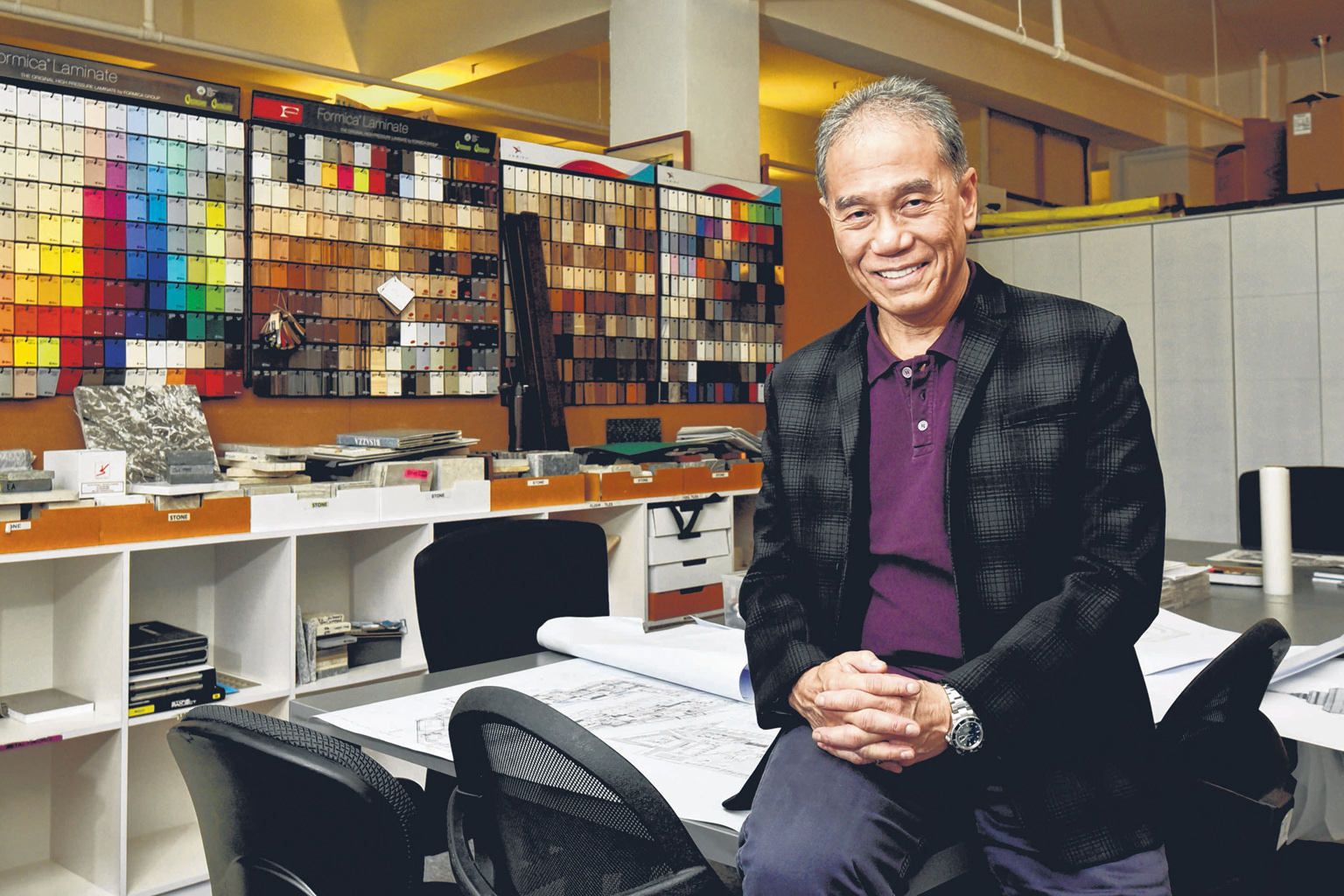The case for accreditation
Following the successful launch of the Landscape Architects Accreditation under DesignSingapore Council's Design Accreditation Framework, the council hopes to extend accreditation to other design sectors. Arti Mulchand reports
Sign up now: Get ST's newsletters delivered to your inbox

Mr Po has led projects that include the vertical gardens at Changi's Terminal 3 and the "hanging gardens" at the Parkroyal on Pickering.
PHOTO: DIOS VINCOY JR FOR THE STRAITS TIMES
Follow topic:
To the layman, beautifying the area around a building may not seem like a very difficult task.
"Some think, 'I can just buy plants.' But this isn't about gardening. It is about integrating landscaping with buildings as a whole," said landscape architect Franklin Po, chairman of Tierra Design.
He added: "Landscape architects are even capable of bringing planting into interior spaces, using plants, for example, to add oxygen and remove toxic chemicals from the air in hospitals."
To give the profession of landscape design more credibility, Mr Po - who last year won the President's Design Award, the nation's higher design honour - has been strongly advocating accreditation in the industry.
When the Singapore Institute of Landscape Architects launched its Landscape Architects Accreditation under the DesignSingapore Council's Design Accreditation Framework last October, he was among the first to apply.
"Proper accreditation gives credence to a profession that has been languishing in the background for a long time, but which has made Singapore the Garden City that it is," he said.
"Can you imagine selling a building without landscape? We have an impact on the industry and the economy, yet landscape architects are not viewed as professionals in our own right," he said.
Indeed, one of the reasons the DesignSingapore Council established the Design Accreditation Framework was to "promote design excellence and strengthen the competitiveness of the design industry".
Landscape architects who apply for accreditation undergo a rigorous selection process. Their academic qualifications and relevant work experience are reviewed, and they also go through an interview.
To stay accredited, they have to constantly upgrade their knowledge and skills through Continuing Professional Development programmes.
Clients are getting on board with the concept. Already, the National Parks Board - the largest government buyer of landscape architecture services here - specifies accreditation as a requirement in its tenders.
And consumers stand to gain from this.
"With the accreditation, end users such as government agencies, private developers and the public can be assured of the quality of work that will be delivered by these accredited landscape architects when they engage them," said Mr Jeffrey Ho, executive director of DesignSingapore Council, when announcing the accreditation programme.
So far, 120 qualified and experienced landscape architects have been accredited and about 220 more are expected to do so by 2019. All accredited landscape architects will be listed in a Design Directory to be launched before the middle of this year.
This will help Singapore move closer to countries such as Australia and the United States, which have formal structures to license and register landscape architects.
In California, where Mr Po trained as an architect, the Landscape Architects Technical Committee legislates the profession and lays down clear rules on who can market themselves as "landscape architects".
Unlicensed landscape professionals cannot, for example, prepare construction documents or specifications for the placement of tangible objects or landscape features for sites other than single-family dwellings.
The rules are an acknowledgement of the range of critical factors landscape architects have to consider when doing their job, from drainage and structural integrity to safety, explained Mr Po.
Given the rapid pace of urban development, landscape architects also ensure that buildings are far more than just concrete, glass and steel.
Examples of these can be seen in some of the celebrated projects Mr Po has led, which include the vertical indoor gardens at Changi Airport's Terminal 3, the "hanging gardens" of the Parkroyal on Pickering hotel and the concept design for Marina Barrage.
Pointing to Parkroyal on Pickering in particular, Mr Po said: "Unless the building industry thinks more like landscape architects, all you will get are monuments."
The Parkroyal on Pickering hotel boasts 15,000 sq m of greenery, including sky gardens and cascading plants on its facade.
Tierra Design has also been behind numerous other "green wall" projects, including The Loft at Nassim Hill. The firm also came up with the idea of covering the pump station building of the Marina Barrage with a green roof.
Given its success in implementing accreditation for landscape architecture, the DesignSingapore Council is now looking into accreditation for other design sectors, such as urban design and interior design.
These are steps in the right direction, said Mr Po. He hopes proper accreditation and recognition at the national level will plant the right seeds for further professional development.
The high standards of landscape architecture could, for instance, be showcased to potential clients in the region and the rest of the world.
"In the last 20 years, architecture in Singapore has grown as a practice. We want to grow the landscape architecture profession in the same way and we are making great strides," he said.
"Those outside Singapore are actually quite envious of the work we do here. Being recognised will give us credence.
"Accreditation is a springboard to a much better way of doing things. And it's an important first step."

